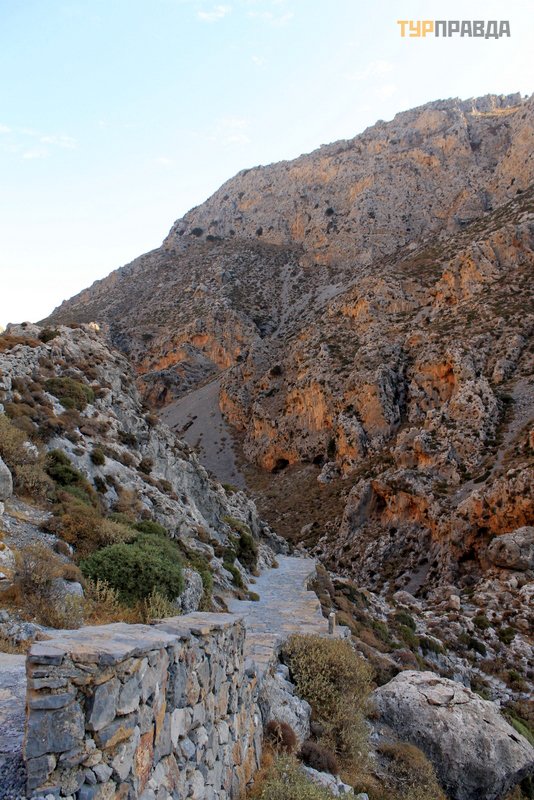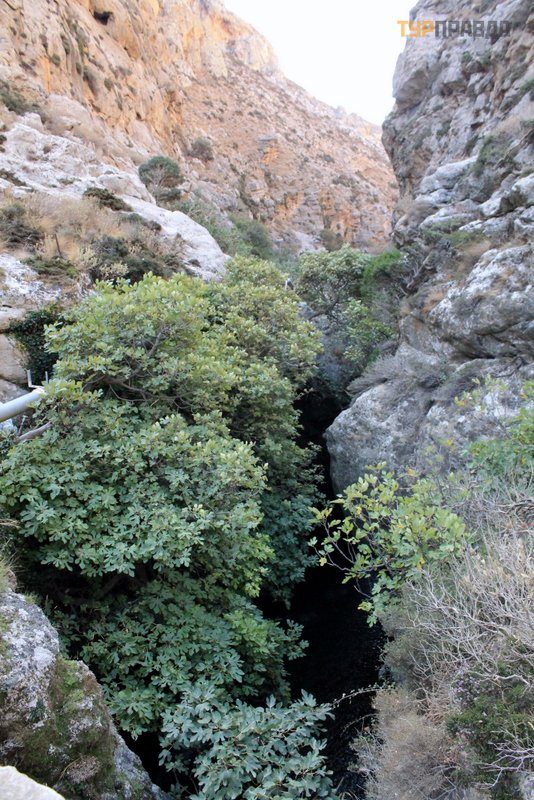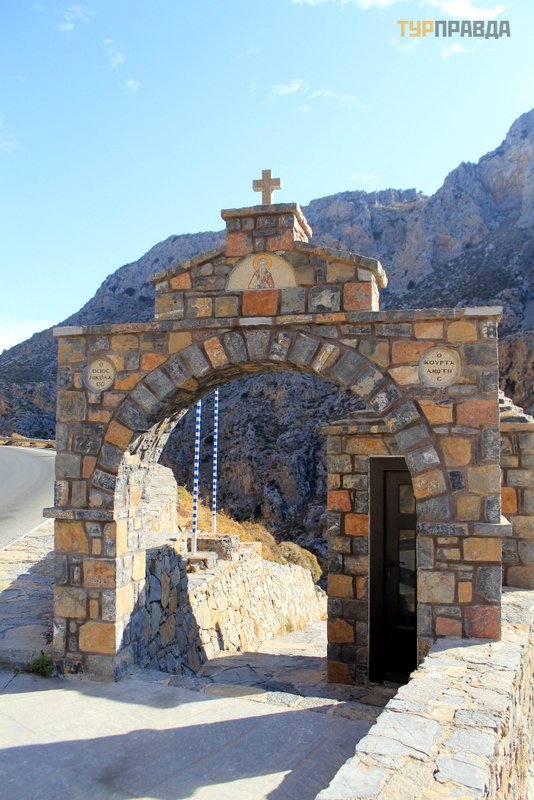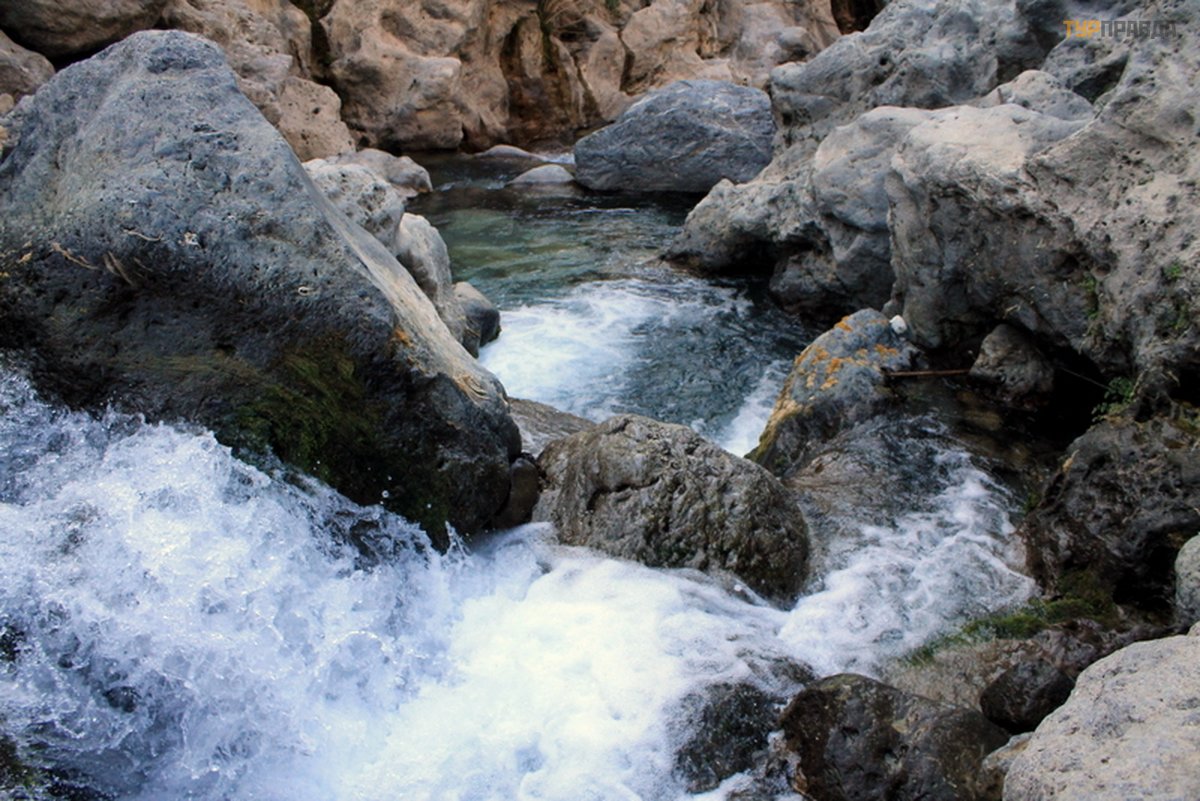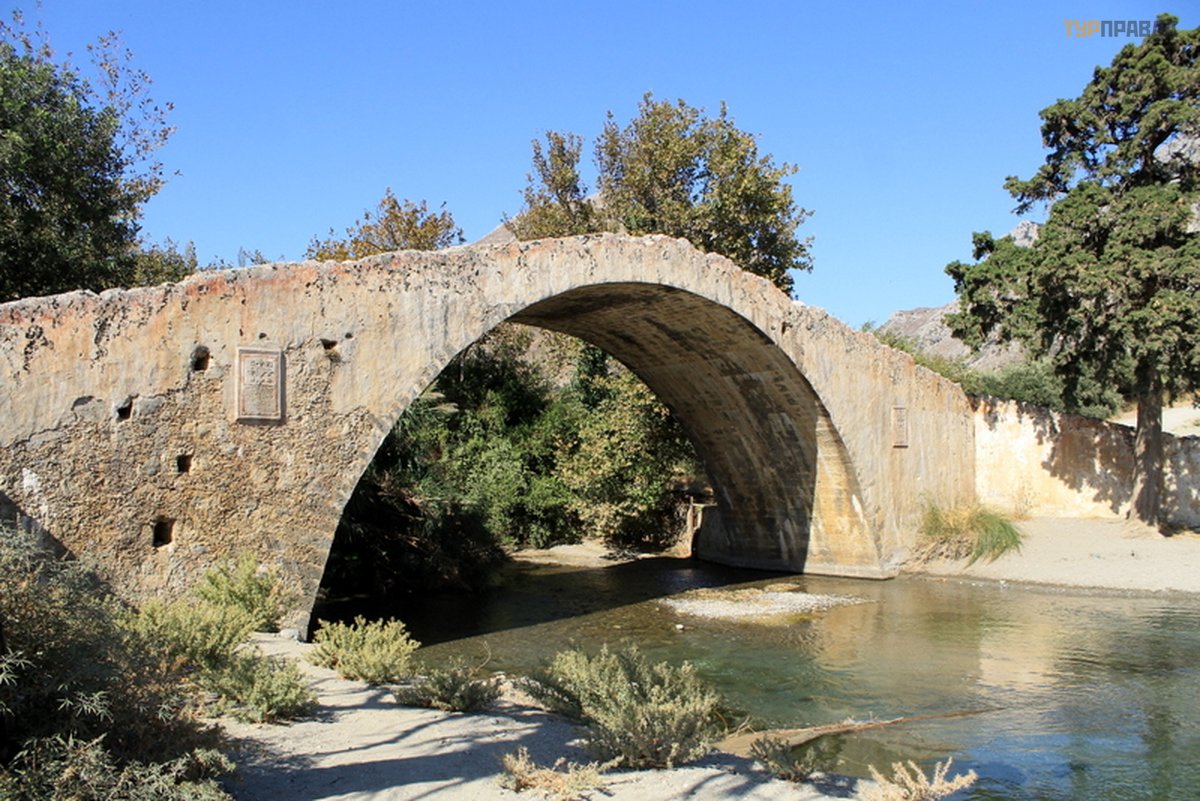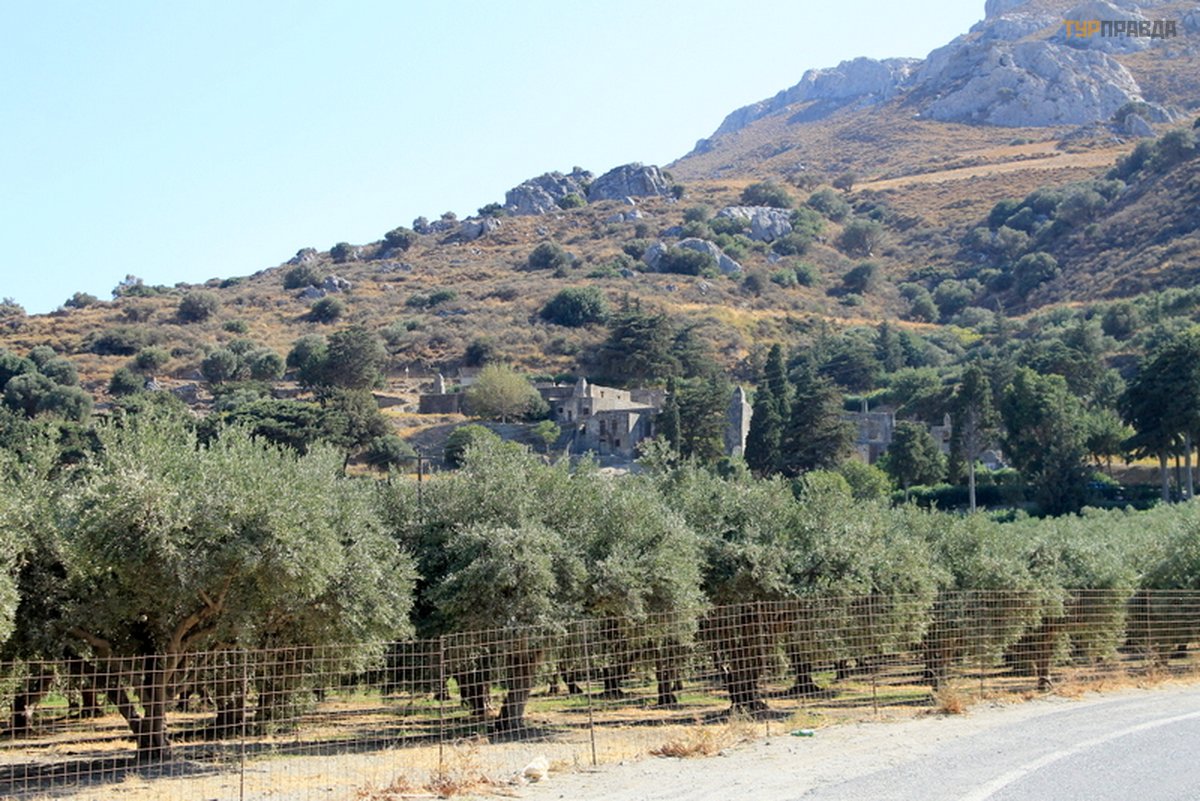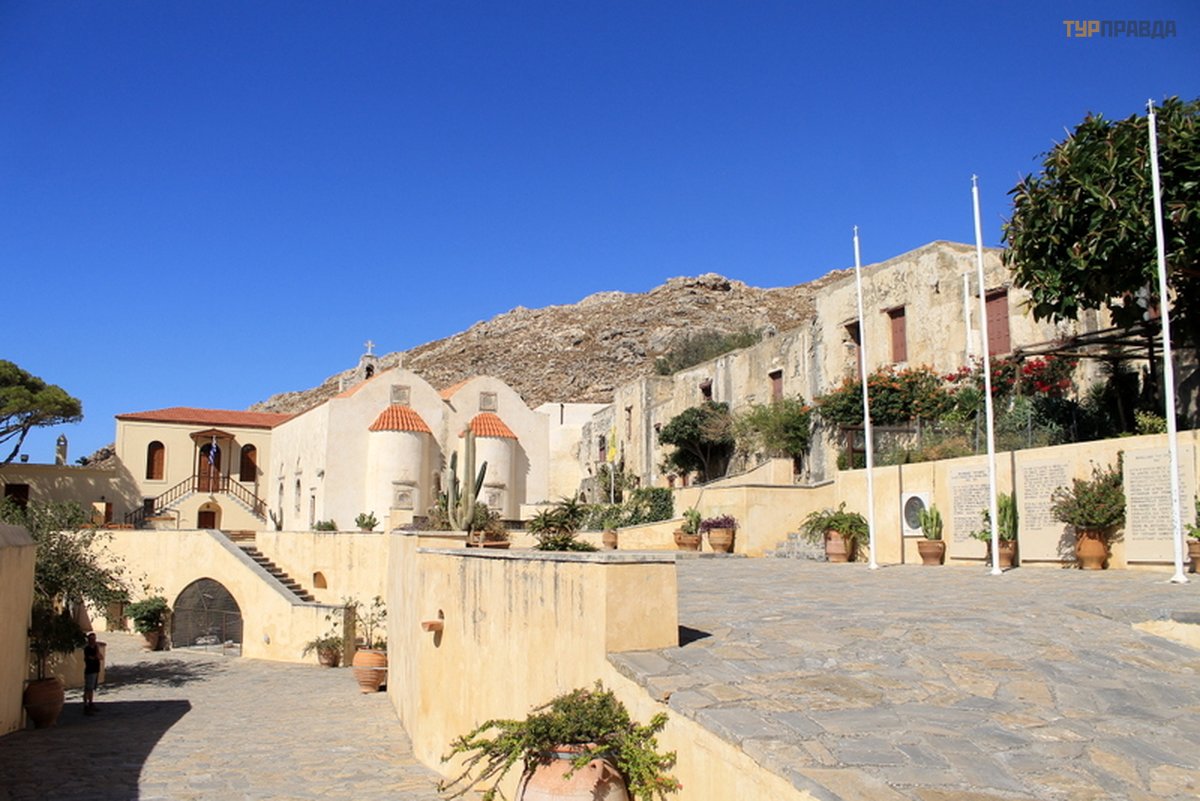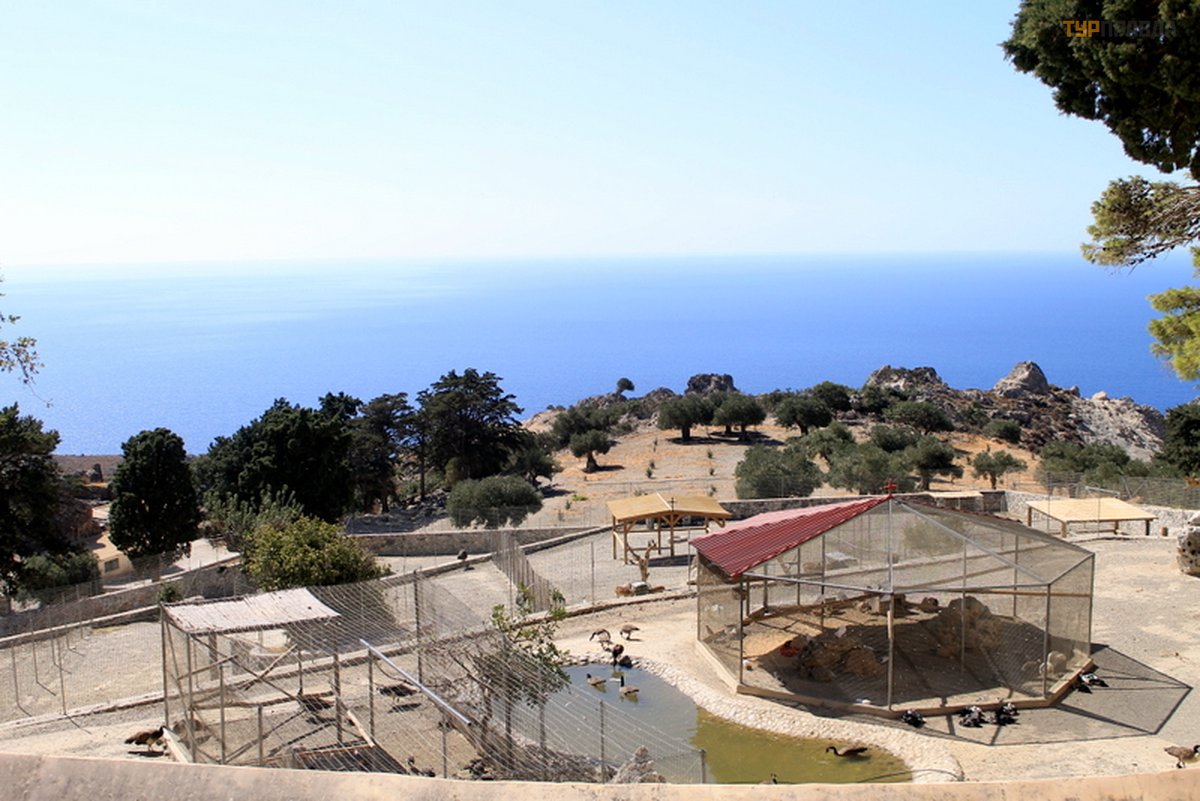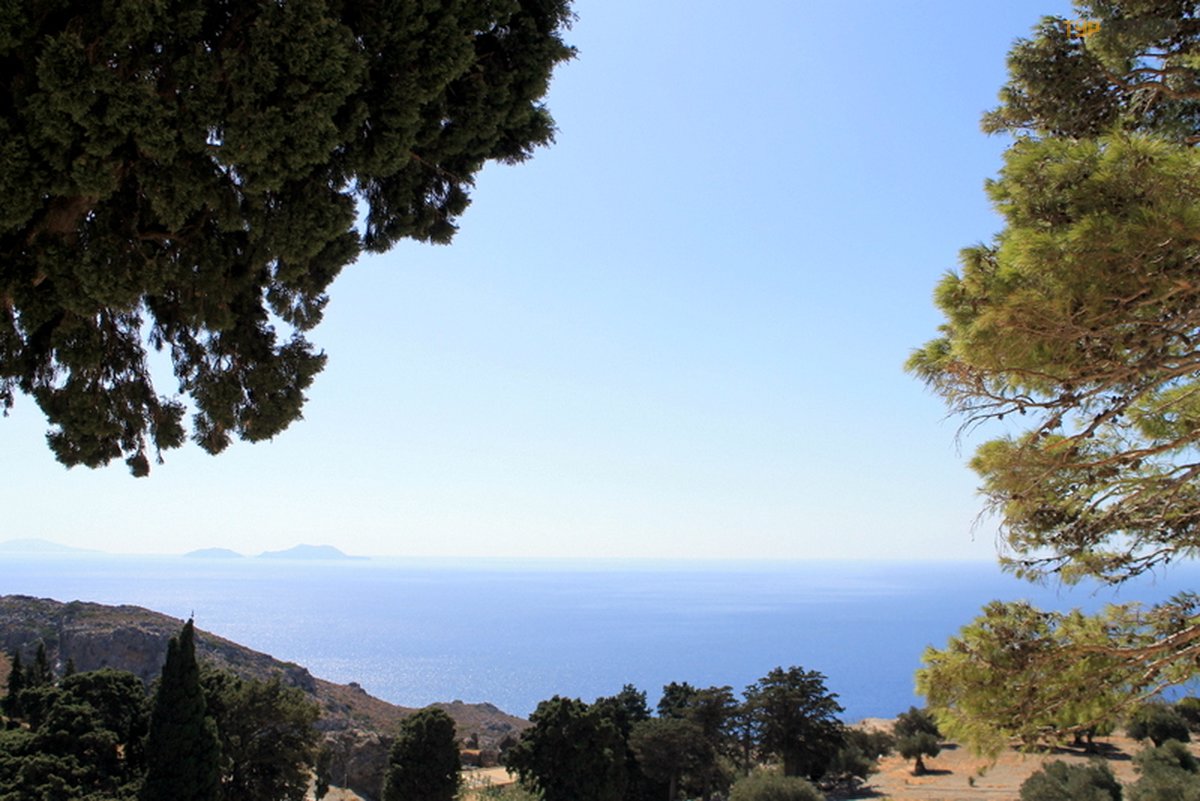By bus, ferry, car… Remembering Crete. Part 7. Through the gorges and up the hills

To be continued. Start here:
Part 1. The puzzle is complete >>>
Part 2. In the labyrinth of history >>>
Part 3. “Candia remained for the descendants…” > >>
Part 5. The enchanting serenity of La Canea >>>
Part 6. From Trinity to Ursa >>>
Another advantage of living near Rethymno is the fact that here the distance from the northern coast to the southern coast is only about 30 km. And it's a sin not to use it! Moreover, the road to the south passes through the most picturesque Kurtaliot Gorge, whose interpretation in free translation sounds like “Slamming Sails” (in other variations I met “Ringing / Thundering Stones” and even “Applause”, but in in any case, a hint of harsh sounds emitted under external influence) due to the almost incessant winds here, whose strength increases in proportion to the narrowness of the gorge.
Today the weather is sunny, which makes walking along the slopes of the gorge more pleasant, but taking pictures is difficult due to the sharp contrasts of lighting. : )
An additional bonus of an independent trip was the fact that we ended up in the gorge before organized tourist groups and were able to enjoy the silence and the surrounding beauties. . .
. . . only in the company of nice locals. ; ))
Here in the gorge is the church St. Nicholas the Wonderworker Kourtaliotis (in general, there are just a huge number of temples in Crete dedicated to this saint).
At the bottom of the gorge flows a river called, as you might guess, Kourtaliotis...
…forming very nice waterfalls and rapids in several places.
As far as I understand, during the rainy seasons, the river becomes more full-flowing and merges with other mountain streams into the Mega Potamos River, which successfully reaches the Libyan Sea. Now it is a narrow brook at the bottom of the gorge.
But while we were wandering through the gorge, a bus with tourists just arrived here, after which we hastily retreated and continued our journey south. There we are waiting for the Monasteries of Preveli, which, again, are considered one of the most interesting and picturesque sights of Crete. True, with pointers to them tension. Probably, the Greeks believe that the way to such a popular attraction is already known to everyone. : )
Additionally confusing the situation (at least for me) is the fact that there are two monasteries - Kato Preveli (Lower) and Piso Preveli (Upper). Therefore, I stubbornly believed that we should visit the Upper Monastery first, and then go down to the Lower. On the ground, everything turned out to be not quite so.
When you see such a glorious bridge. . .
…through the small river Burdzukos…
…forming a little further away a lake, beyond which an olive grove is spread…
. . . you can safely park - you are at the first goal, Kato Preveli (Lower) Monastery, dedicated to St. John the Baptist.
The view of Kato Preveli is rather abandoned, since 1970 the monastery was generally closed to the public and opened after reconstruction only in 2013. But in any case, it is quite interesting to wander around its territory, imagining how everything here was organized in the old days when the monastery played more the role of an economic unit in the Preveli complex...
. . . to appreciate the opening views of the olive grove and the bridge mentioned earlier, which, by the way, was built by local monks back in 1850
There is also a small one-nave church on the territory of the Lower Monastery. . .
…as well as a museum that tells about the history of the monastery and the participation of its monks in the liberation movement against the Turks and keeps ancient icons and other church utensils. Its visit will not take you much time, after which you can move on to the Upper Piso Preveli (Upper) Monastery, dedicated to John the Theologian.
The foundation of the monastery is attributed to the Venetian period of the history of the island and is associated with the name of the local landowner (in other sources - a monk) Prevelis, and the confirmed date of foundation is 1594, which is engraved on the church bell.
Although it is believed that there was already a monastery on this site, founded back in the Byzantine period at the end of the 10th century, which is not surprising - why not settle in such and such beauty! : ))
In general, the monastery has a U-shape, where utility and residential buildings are located around the perimeter...
…spring of holy water…
. . . and in the center of the courtyard, on the site of the one demolished in 1835, a new church was erected. . .
…consisting of two aisles - in honor of John the Theologian and the Blessed Virgin Mary.
The main relic of the monastery is the miraculous Cross of Ephraim of Preveli, which contains a particle of the cross on which Jesus was crucified and heals eye diseases. There is a legend that during the Turkish occupation, the Cross was lost and discovered in 1823 by Genoese sailors who were trying to take it home. But the ship carrying him stopped at sea abeam the monastery and could not move on, although a fair wind blew in her sails. As a result, the Cross was returned to the monastery, and the Genoese successfully continued their voyage. Later, during World War II, the Germans stole the Cross and wanted to take it to Germany, but for some reason the plane with this artifact could not take off. The same strange story was repeated with the second and third aircraft. And the Cross, fortunately, was again returned to the monks of Preveli. : )
There is also a small zoo with various birds on the territory of the monastery.
And here, for the first time, I managed to see fights... turtles chasing each other around a small enclosure and literally fighting for life and death (if they were not protected by shells). And the main troublemaker was the smallest member of the community. : )
Otherwise, peace and quiet reign in the temple, and from the slopes of the mountain, picturesque views of the Libyan Sea and Africa, invisible to the eye, but guessed beyond the horizon, open up.
And, as it turned out later, Africa was not that far away, but more on that in next part.



